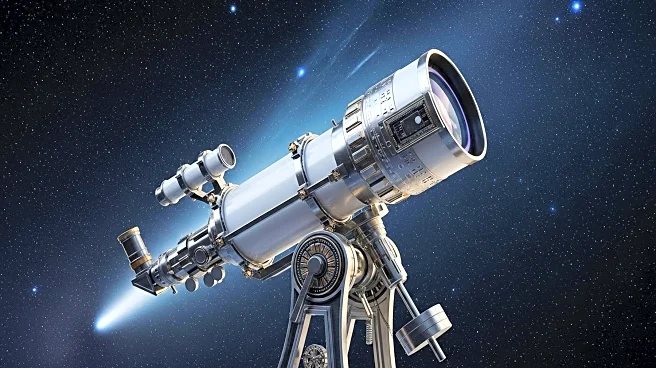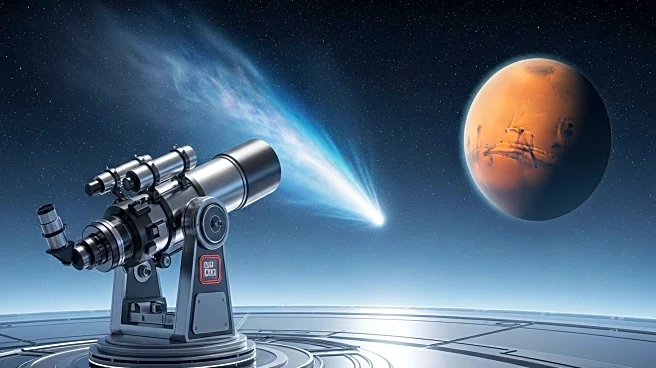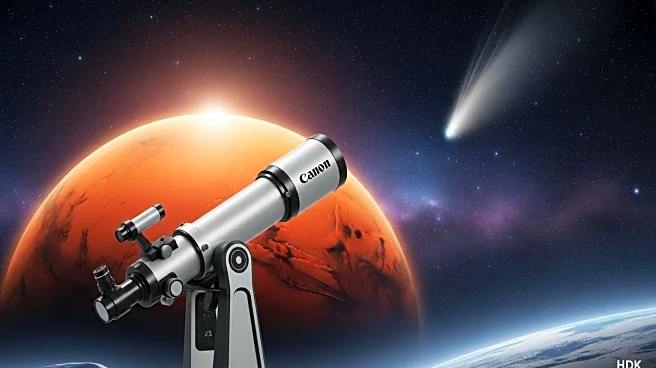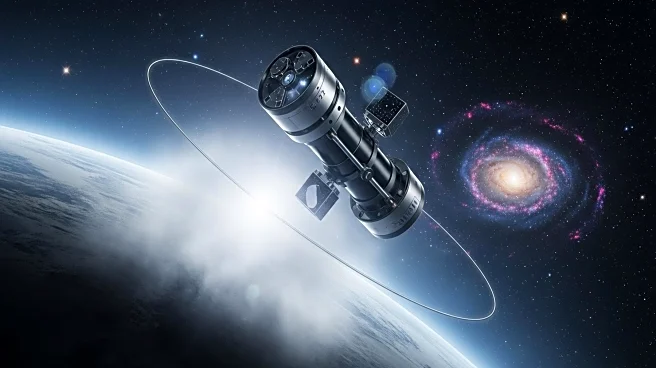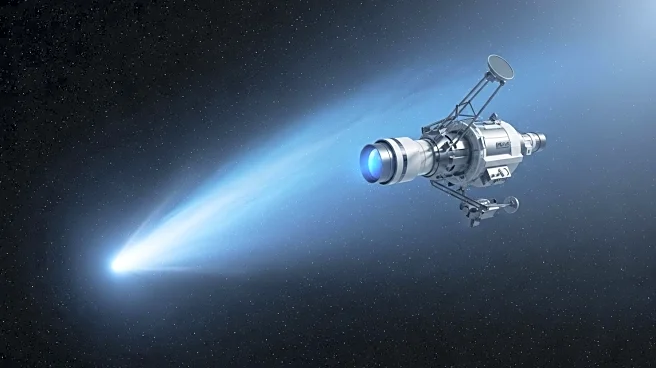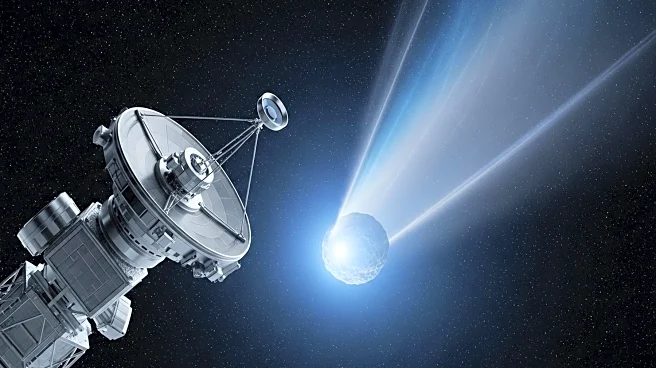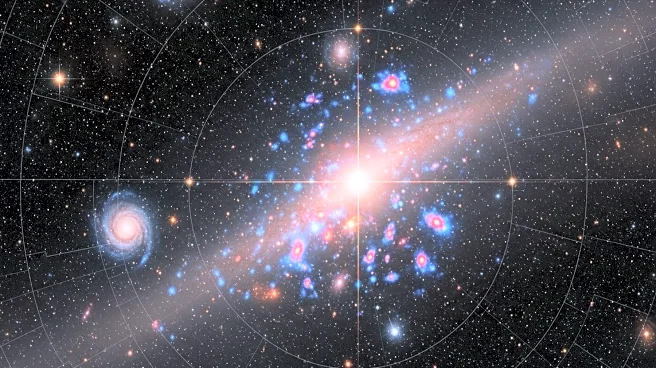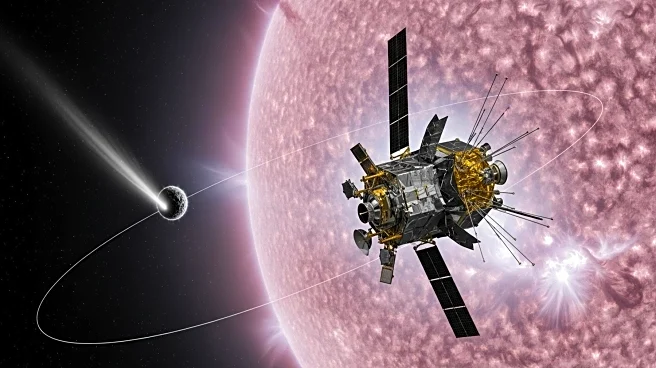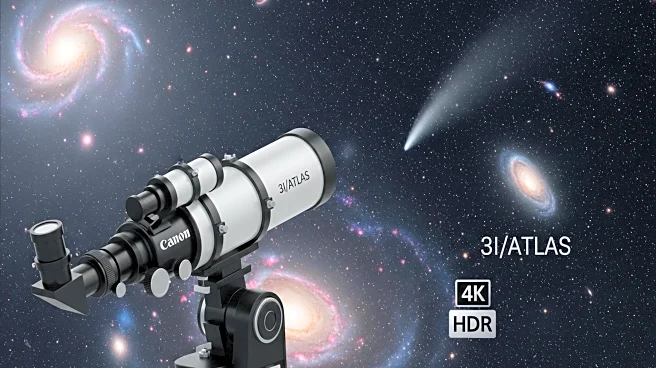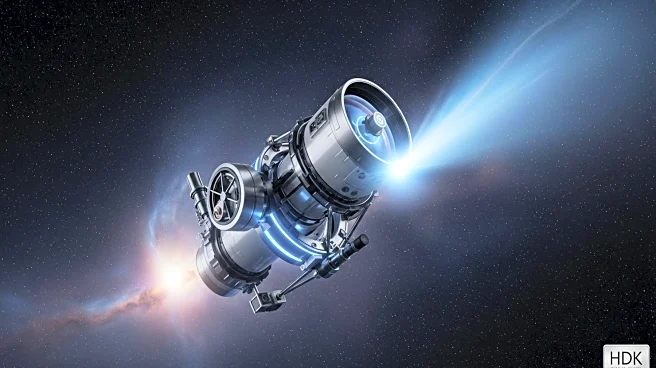What's Happening?
NASA and ESA's telescopes, including Hubble, SPHEREx, JWST, and TESS, have observed the interstellar comet 3I/ATLAS, revealing its unique characteristics. The comet, which was first detected in July 2025, has been found to have a higher proportion of carbon dioxide in its atmosphere compared to typical comets. This discovery suggests that 3I/ATLAS may have formed in a different environment or has a distinct internal composition. The comet was observed to be active at a distance of 6 astronomical units from the Sun, which is unusual as most comets show activity closer to 5 AU. The observations indicate that the comet's early activity may be due to its composition, particularly the presence of carbon dioxide, which sublimates more readily than other ices.
Why It's Important?
The findings about comet 3I/ATLAS are significant as they provide insights into the formation and composition of interstellar objects. Understanding the chemical makeup and behavior of such comets can offer clues about the conditions in other parts of the galaxy where these objects originate. The high carbon dioxide content could imply exposure to different radiation levels or formation near the CO2 ice line in its parent protoplanetary disk. These observations contribute to the broader understanding of cometary science and the diversity of celestial bodies in the universe.
What's Next?
As 3I/ATLAS approaches its perihelion on October 29, further observations are expected, although the comet will be obscured by the Sun's glare from Earth's perspective. After perihelion, the comet will make its closest approach to Earth, providing additional opportunities for study. There is potential for the Juno spacecraft to intercept the comet as it passes by Jupiter in March next year, which could yield more detailed data on its composition and behavior.
